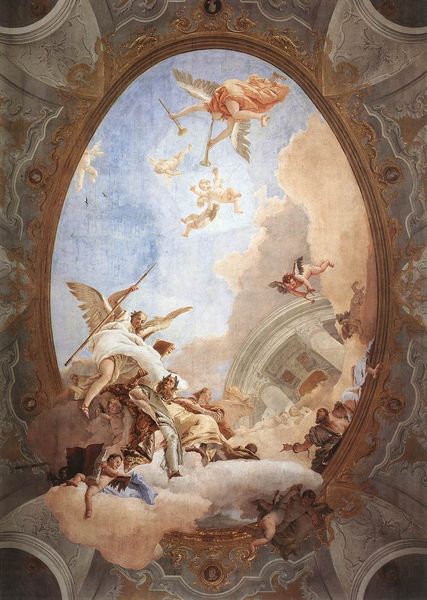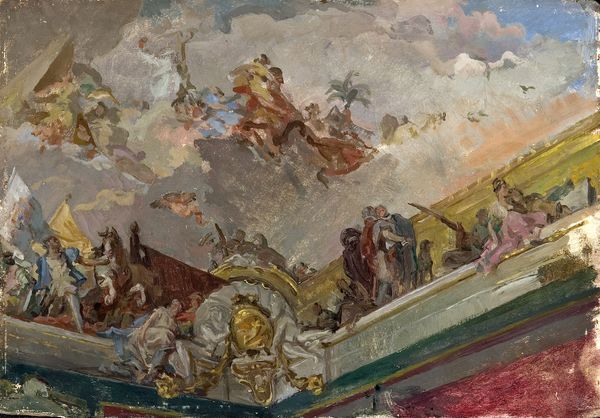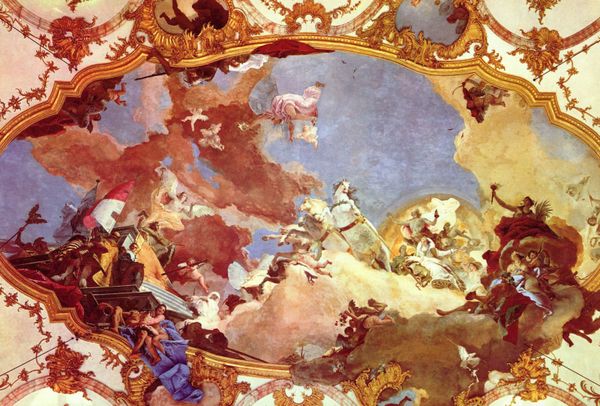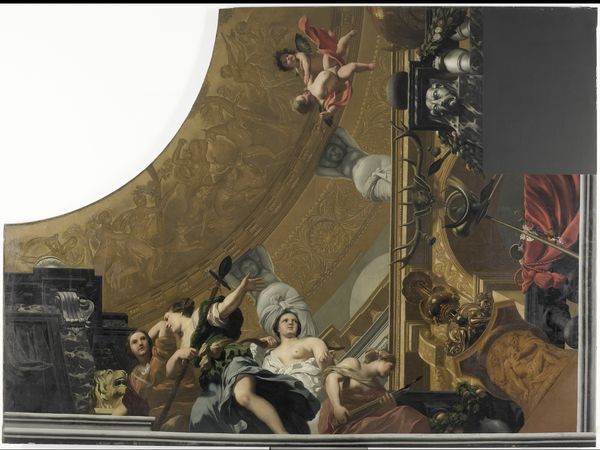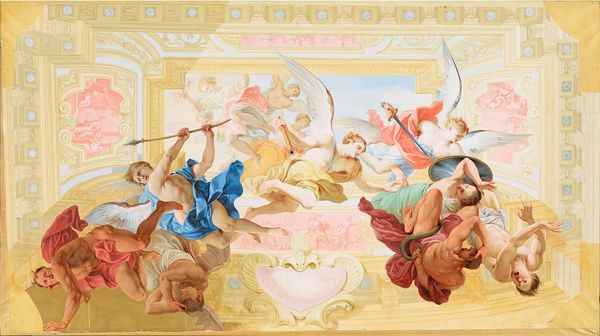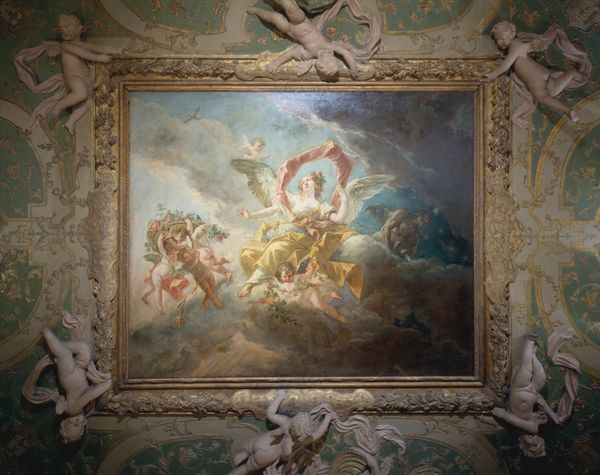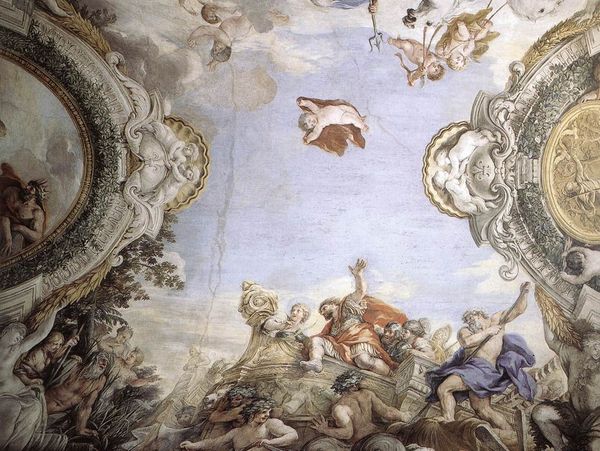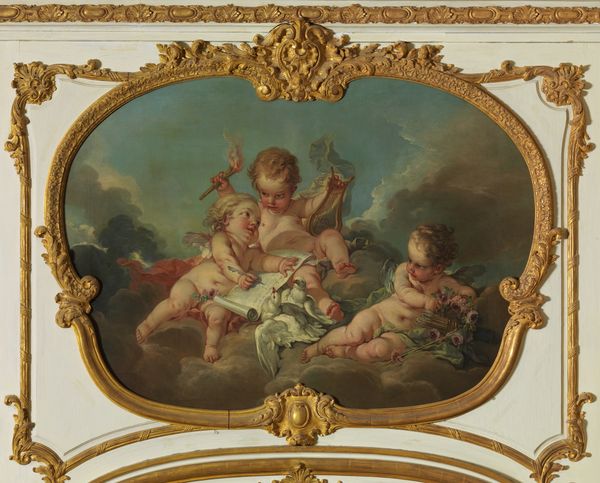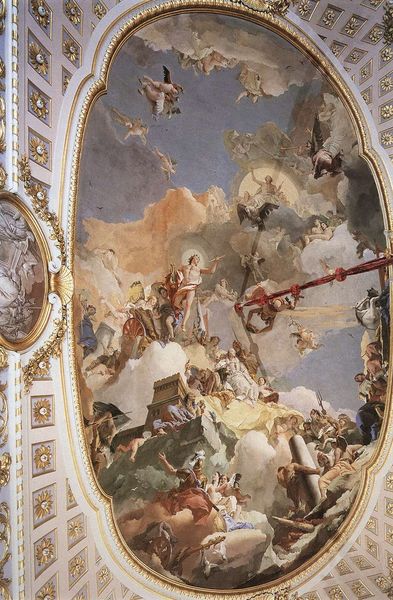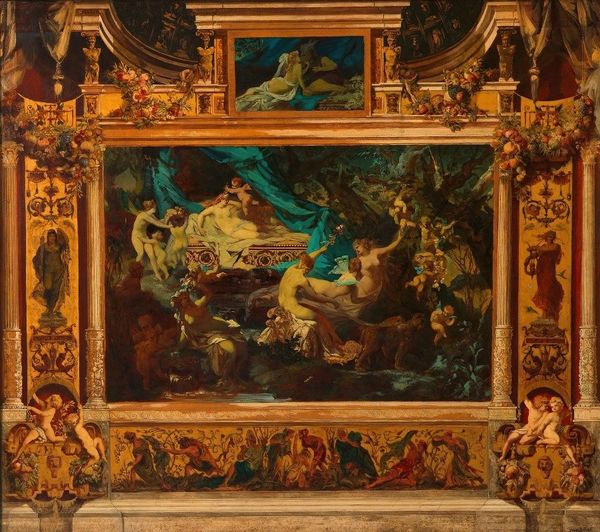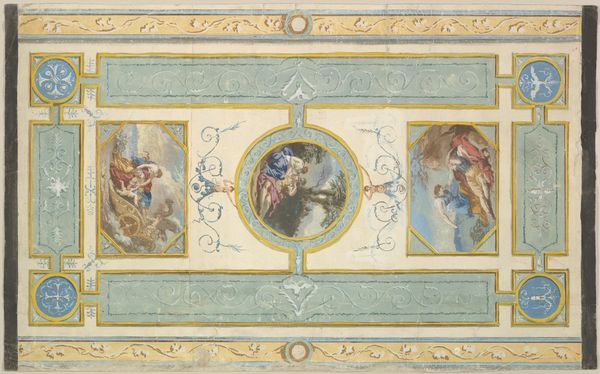
Copyright: Public Domain: Artvee
Curator: John Singer Sargent painted this study, "Tiepolo Ceiling, Milan," around 1898-1900. It’s a tempera on, presumably, paper. It looks like a preparatory sketch for a much larger work. Editor: It gives off this faded grandeur. A swirl of pale colors depicting figures and shapes above the heavy gold cornice makes me think of an illusion. Curator: Indeed. It appears to be a record of a frescoed ceiling, emulating the Baroque style so beautifully rendered by Tiepolo. The location in Milan is suggestive. It raises the question of whose patronage Sargent enjoyed during his time there and for what purpose he made this study. Editor: Visually, the figures sort of emerge from the sky. You’ve got putti and allegorical characters seemingly suspended. And they seem weightless and ethereal. In terms of symbolism, the floating figures are archetypes related to Renaissance aspirations of classicism and humanist belief that still found resonance at the turn of the 20th century. Curator: Absolutely. It fits within a grand tradition. These types of ceilings reinforced hierarchies. These palatial and ecclesiastic spaces needed constant artistic renewal to stay in alignment with contemporary social and political sensibilities, as art continuously reshaped society's reflection of itself. Editor: It's striking how Sargent, known for his portraits, captures the essence of Tiepolo's dynamism. Those diagonals and that upward movement really capture your eye. The image retains this optimism, but the golden, rigid frames almost keep them prisoners in a specific class system or belief. It is complex. Curator: Exactly. Sargent often straddled tradition and modernity. This study is a fascinating glimpse into his engagement with the artistic canon. This gives insight to understanding not just him as a recorder of society, but as an active participant in the restaging of power through artistic patronage and image making. Editor: For me, the artwork reveals how symbols live beyond their original context. Tiepolo's symbols are kept alive within Sargent’s representation, making history fluid, but anchored to its past. Curator: I'm left considering the art world as it evolved at the beginning of the 20th century, one where tradition was still relevant. Editor: I can see that the echo of older symbols has remained central to collective dreaming.
Comments
No comments
Be the first to comment and join the conversation on the ultimate creative platform.
